A composite radio-optical image shows five new clouds of hydrogen gas discovered using the Green Bank Telescope. The spiral galaxy M81 and its satellite, M82, are seen in visible light (white); the new hydrogen gas is colored red; and additional hydrogen gas earlier detected by the Very Large Array (green). The M81 Group of galaxies, 11.8 million light-years from Earth, are interacting gravitationally with each other, as shown clearly by the gas streaming among them. The newly-discovered gas clouds, each containing from 14 to 57 million times the mass of our Sun, are similar to gas clouds near our own Milky Way Galaxy. They are likely remnants of earlier interactions among the galaxies. Probably, the Milky Way has had a similar history.
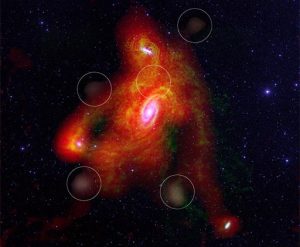
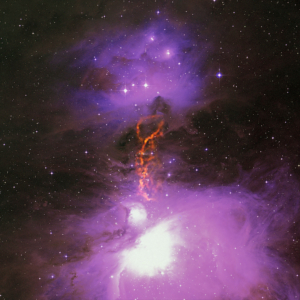
Pebble-Size Particles May Jump-Start Planet Formation
Radio/optical composite of the Orion Molecular Cloud Complex showing the OMC-2/3 star-forming filament. GBT data is shown in orange. Uncommonly large dust grains there may kick-start planet formation.
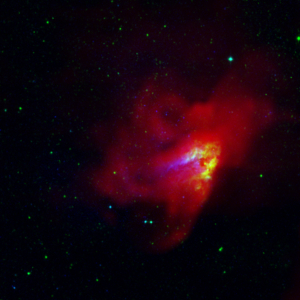
The Omega Nebula
The Omega Nebula (also known as M17, the Swan Nebula, and the Lobster Nebula) lies about 5700 light years away in the constellation of Sagittarius. The nebula is found at the edge of a dark gas cloud in which new stars are being born. Optical light, infrared radiation and radio waves are emitted by the nebula. The infrared radiation (green) is emitted by dust clouds warmed by new stars imbedded in the nebula. The optical light (blue) and radio waves (red) are produced when hot, young stars ionize the gas around them. While much of the optical light is blocked by foreground dust clouds, the radio radiation streams on through, allowing us to see all of the hot gas with the Green Bank Telescope (GBT).
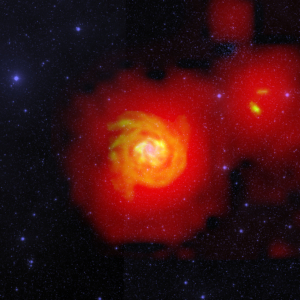
Rivers of Hydrogen Connect Clusters of Galaxies
This composite image contains three distinct features: the bright star-filled central region of galaxy NGC 6946 in optical light (blue), the dense hydrogen tracing out the galaxy’s sweeping spiral arms and galactic halo (orange), and the extremely diffuse and extended field of hydrogen engulfing NGC 6946 and its companions (red). The new GBT data show the faintly glowing hydrogen bridging the gulf between the larger galaxy and its smaller companions. This faint structure is precisely what astronomers expect to appear as hydrogen flows from the intergalactic medium into galaxies or from a past encounter between galaxies.
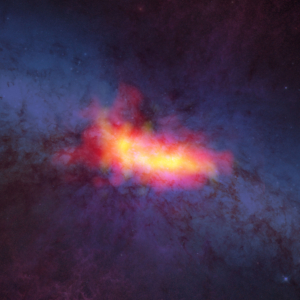
M82 As Seen By the GBT
This composite image of starburst galaxy M82 shows the distribution of dense molecular gas as seen by the GBT (yellow and red) and the background stars and dust as seen by Hubble (blue). The yellow areas correspond to regions of intense star formation. The red areas trace outflows of gas from the disk of the galaxy.
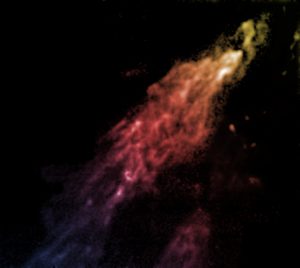
Smith’s Cloud
A false-color image of Smith’s Cloud made with data from the Green Bank Telescope (GBT). It was named after the astronomer who discovered it in 1963, and it contains enough hydrogen to make a million stars like the Sun. Eleven thousand light-years long and 2,500 light-years wide, it is only 8,000 light-years from our Galaxy’s disk. It is careening toward our Galaxy at more than 150 miles per second, aimed to strike the Milky Way’s disk at an angle of about 45 degrees. It’s comet-like shape is due to its interaction with the very outer gases of our Galaxy. It will be stretched apart before it finally hits the denser parts of the Milky Way in 40 million years.





